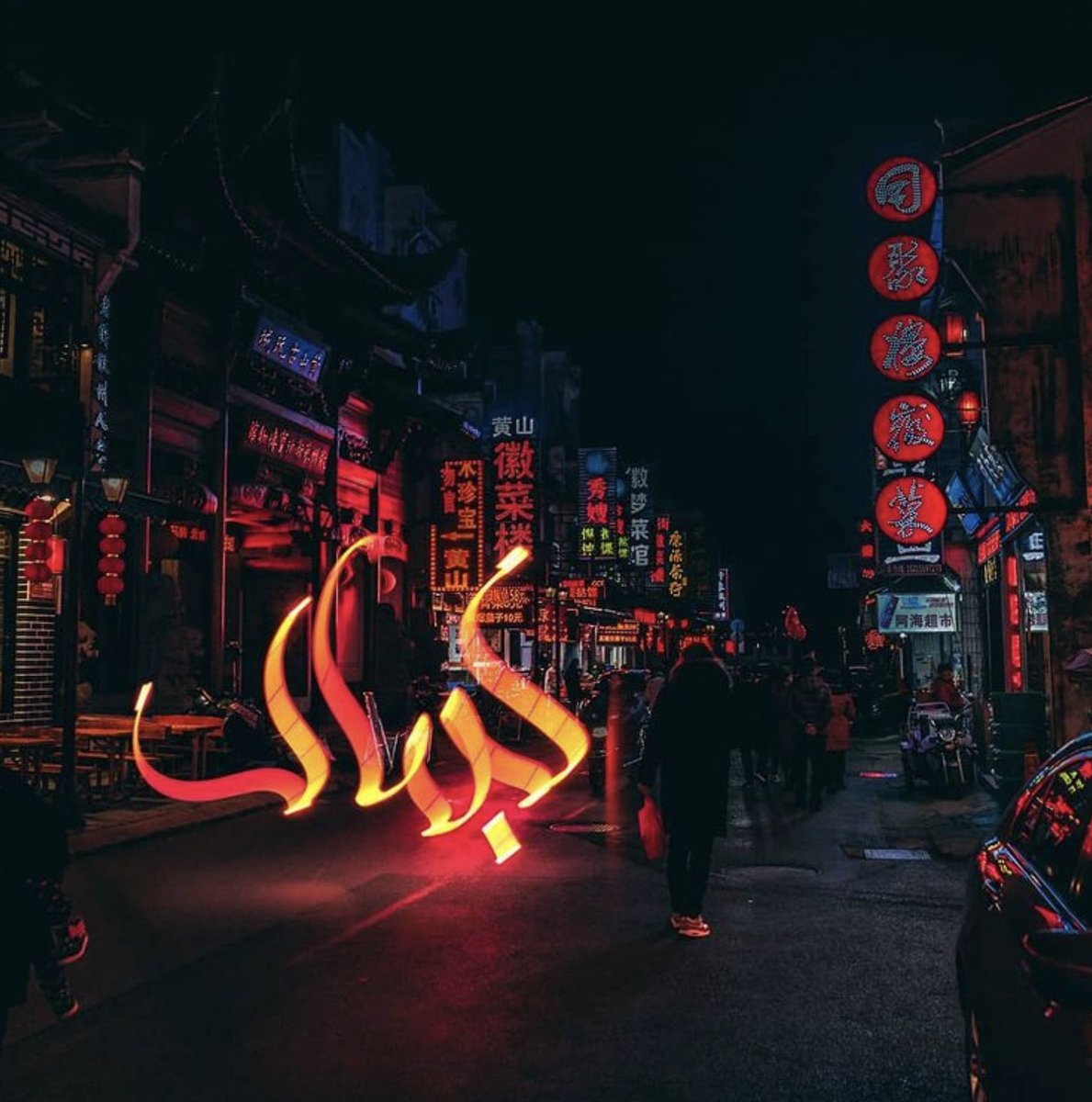Arabic calligraphy is the most highly regarded element of Islamic art, as it is the language of Qur’an. The script has the potential for creating ornamental forms
Today, the art of Arabic calligraphy continues
For #Ramadan a thread on 15 artists redefining Arabic calligraphy…
Today, the art of Arabic calligraphy continues
For #Ramadan a thread on 15 artists redefining Arabic calligraphy…

1/ Based in London @ArtofthePen is an internationally renowned classically trained calligrapher. Her work pushes the boundaries of what is expected from this traditional art form. In 2005, Soraya was awarded the sought-after icazetname from Istanbul…
baytalfann.com/post/a-calligr…
baytalfann.com/post/a-calligr…

2/ Artist @WissamSh is an expert in Arabic calligraphy. He is largely self-taught, attaining mastery through book research, visits to various masters, museum & library collections. He has developed a signature style, which is referred to as Calligraform…
baytalfann.com/post/calligraf…
baytalfann.com/post/calligraf…

3/ Artist @MajidAlyousef is a calligrapher & typographer. He has a unique style, merging traditional Arabic calligraphy with contemporary visual arts. Majid’s work is inspired by abstract painting & sculpture, especially cubism, futurism & de stijl…
baytalfann.com/post/innovatin…
baytalfann.com/post/innovatin…

4/ Artist @elseed uses his distinctive style of Arabic calligraphy merged with graffiti, to spread messages of peace, & highlight the commonalities of human existence.
His calligraffiti is a tool for unifying communities, & can be found over the world…
baytalfann.com/post/calligraf…
His calligraffiti is a tool for unifying communities, & can be found over the world…
baytalfann.com/post/calligraf…

5/ Dubai based artist, Yosra Emamizadeh started drawing from a young age while growing up in Tehran, Iran.
Her cultural heritage, identity & faith work are deeply rooted & reflected in her work…
نَفَسْ/نَفْسْ
Nafas/ Nafs
Breath/ Self
baytalfann.com/post/drawing-h…
Her cultural heritage, identity & faith work are deeply rooted & reflected in her work…
نَفَسْ/نَفْسْ
Nafas/ Nafs
Breath/ Self
baytalfann.com/post/drawing-h…

6/ Artist @zahragulraizart uses Arabic Calligraphy in her own bold and distinctive style to spread positive energy into people’s surroundings. Along with her striking use of colours, she focuses around quotes that uplift and inspire…
baytalfann.com/post/vibing-ca…
baytalfann.com/post/vibing-ca…

7/ Lebanese Artist Ghaleb Hawila is fascinated by the endless possibilities of Arabic calligraphy, which he approaches with a new eye. Ghaleb’s work comes from a deep understanding of Middle-Eastern heritage and spiritual paths…
baytalfann.com/post/challengi…
baytalfann.com/post/challengi…

8/ Pouran Jinchi’s art is characterized by an innovative play on calligraphy & script. She translates despair and destruction into a beautifully ethereal visual language…
baytalfann.com/post/complexit…
baytalfann.com/post/complexit…

9/ British Muslim artist & brandalism activist @Teakster believes art has the power to unite people, & connects communities by challenging perceptions of space, replacing outdoor advertising with beautiful artwork…
baytalfann.com/post/brandalis…
baytalfann.com/post/brandalis…

10/ Saudi & Morrocan artist Shaker Kashgari’s work stands out due to his creativity as well as diversity. Whether a canvas with traditional scripture or a word designed in calligraffiti, Shaker has proven it is possible to be a self taught talent…
baytalfann.com/post/diverse-c…
baytalfann.com/post/diverse-c…

11/ For artist & calligrapher @Hatem_Arafa_ Arabic calligraphy is a kind of addiction, & practicing drawing each letter gives him unprecedented enjoyment & satisfaction…
baytalfann.com/post/redefinin…
baytalfann.com/post/redefinin…

12/ UK based artist @handofayesha expresses her love for the written word through her work. She is fascinated by the concept of culture & how this influences art. This has lead her to experiment with modern Arabic, Urdu & Farsi lettering with street art…
baytalfann.com/post/abstract-…
baytalfann.com/post/abstract-…

13/ Artist Aliya Quraishi is based in Melbourne, Australia. After studying fine art & textiles, she was inspired you to move towards specializing in Islamic art and calligraphy. Her work explores traditional futures…
baytalfann.com/post/tradition…
baytalfann.com/post/tradition…

14/ Shaimaa Osman is a Dutch-born, North African Sudanese junior doctor & artist based in Devon.
Interested in the universal & personal connections found in maps, @salamsanctuary is renowned for her exploration of calligraphy, maps & collage…
baytalfann.com/post/maps-glob…
Interested in the universal & personal connections found in maps, @salamsanctuary is renowned for her exploration of calligraphy, maps & collage…
baytalfann.com/post/maps-glob…

15/ Born in Tehran, @snasernia began his career primarily as a calligrapher & typography artist. He talks about turning Arabic letters into an abstract language, the concept behind Crazy Kufik & deconstructing the rules of Arabic & Persian writing…
baytalfann.com/post/deconstru…
baytalfann.com/post/deconstru…

Thank you so very much @DEJPett we are so grateful for your retweet and kind support #RamadanMubarak
Thank you so much for kindly sharing @meenakandasamy ♥️
• • •
Missing some Tweet in this thread? You can try to
force a refresh






















